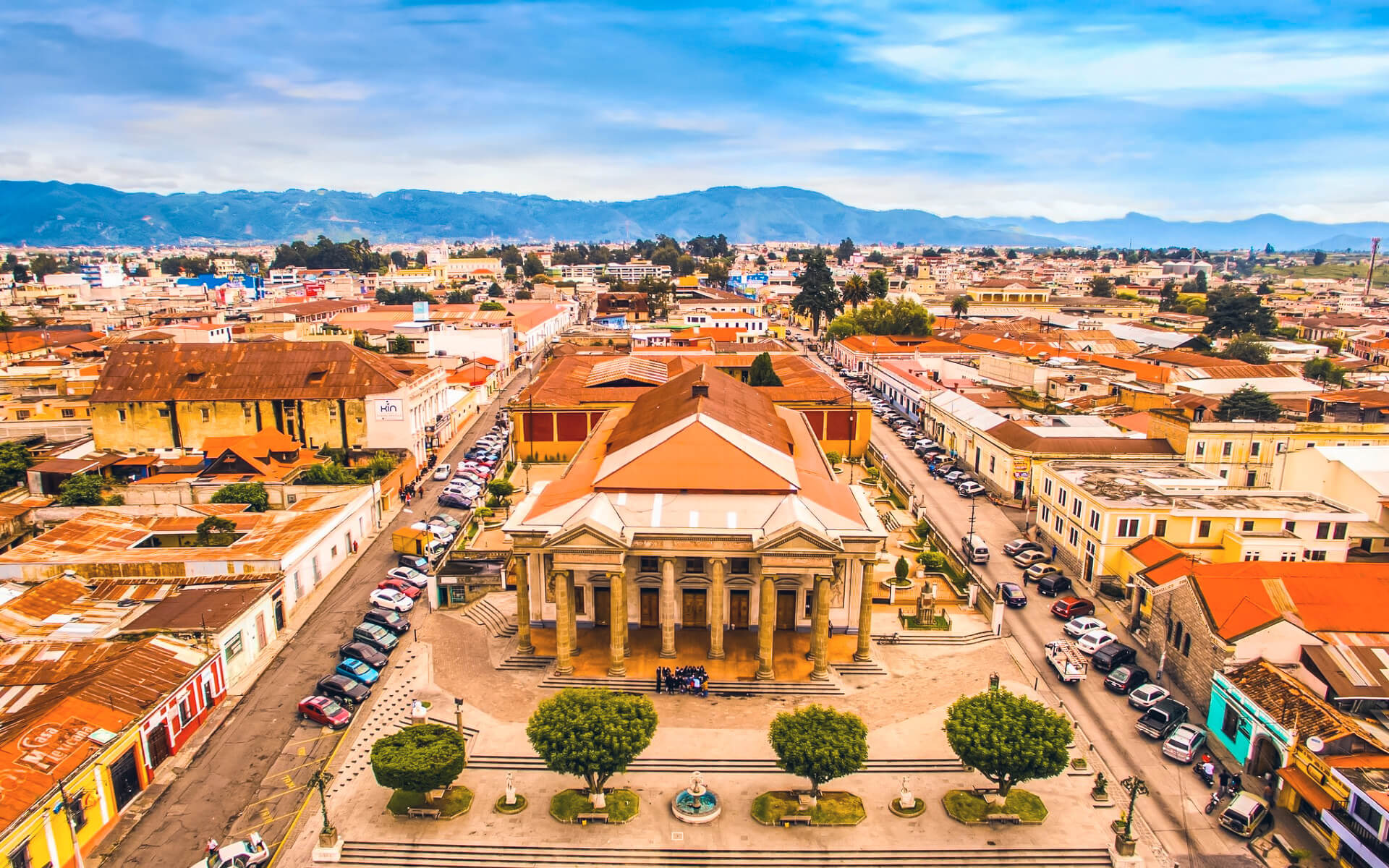Quetzaltenango, often known as Xela (pronounced SHAY-la) or Xelaju, is Guatemala’s second biggest city. There are many sights in town, and it is also a wonderful starting point for exploring Guatemala’s Western Highlands (“Los Altos”). The neighboring department, located in the southwest of the nation, features a diversity of scenery ranging from the chilly mountains to the balmy Pacific coast. Volcanoes, hot springs, valleys, mountains, and rivers abound. The area produces a variety of goods, including coffee, wheat, fruits and vegetables, and sheep and cattle rearing.
The headquarters and main city of the Department of the same name, Quetzaltenango, is located on a vast plain surrounded by hills and volcanoes. Quetzaltenango preserves historic K’iche’ Maya customs and the colonial history while retaining the vitality of contemporary life.
The city’s origins may be traced back to the Pre-Columbian Maya period. The Mam authority, known as Kulahá, had achieved its pinnacle of power. Later, the K’iche’ rulers captured the region and relocated the city of Xelaj from its original site at the foot of the volcano Santa Maria.
When the Spanish Conquistadors arrived in Guatemala in the early 1500s, the city was already around 300 years old. Their local allies, the Nahuas of Central Mexico, named the city Quetzaltenango, which means “the site of the Quetzal bird” in Nahua. The Nahuas gave the name to the Spanish. It is still the city’s official name, although residents prefer to call it “Xela” after the old name of Xelaj.
During the Spanish Colonial era, it served as the administrative center of the Western Highland area. It became a member of the Central American Federation when Central America gained independence from Spain in the 1820s. Conflicts between the interests of Quetzaltenango and Guatemala City resulted in the establishment of “Los Altos,” the “Sixth State of the Central American Confederation,” comprising of Western Guatemala (and a portion of what is now Chiapas Mexico), with Quetzaltenango as its seat. When the Central American Federation disintegrated in 1839-1840, Los Altos temporarily became a de facto autonomous state until the army of Guatemalan ruler Carrera ruthlessly recaptured the city and hanged its leaders.
The city prospered during the boom in coffee production in the late nineteenth and early twentieth centuries, when many of the city’s “Belle Époque” style monuments still stand. Plans for a railway to Quetzaltenango date back to the 1890s, with building beginning in the 1920s and finishing in 1930. The “Ferrocarril de los Altos” was hailed as the engineering wonder of the century—until it was wrecked by landslides in 1933. The mythical railroad lives on in local song and legend, and there is a museum devoted to it in town.
From the Great Depression through the Guatemalan Civil War in the late twentieth century, Quetzaltenango’s affluence fell, and for a while, most of the city seemed unkempt. However, with the arrival of the new century, happier times have returned. The city is more attractive and dynamic than ever, with ancient landmarks renovated and new ones added.
Quetzaltecos are proud of their city, its unique regional culture, and its illustrious history.


